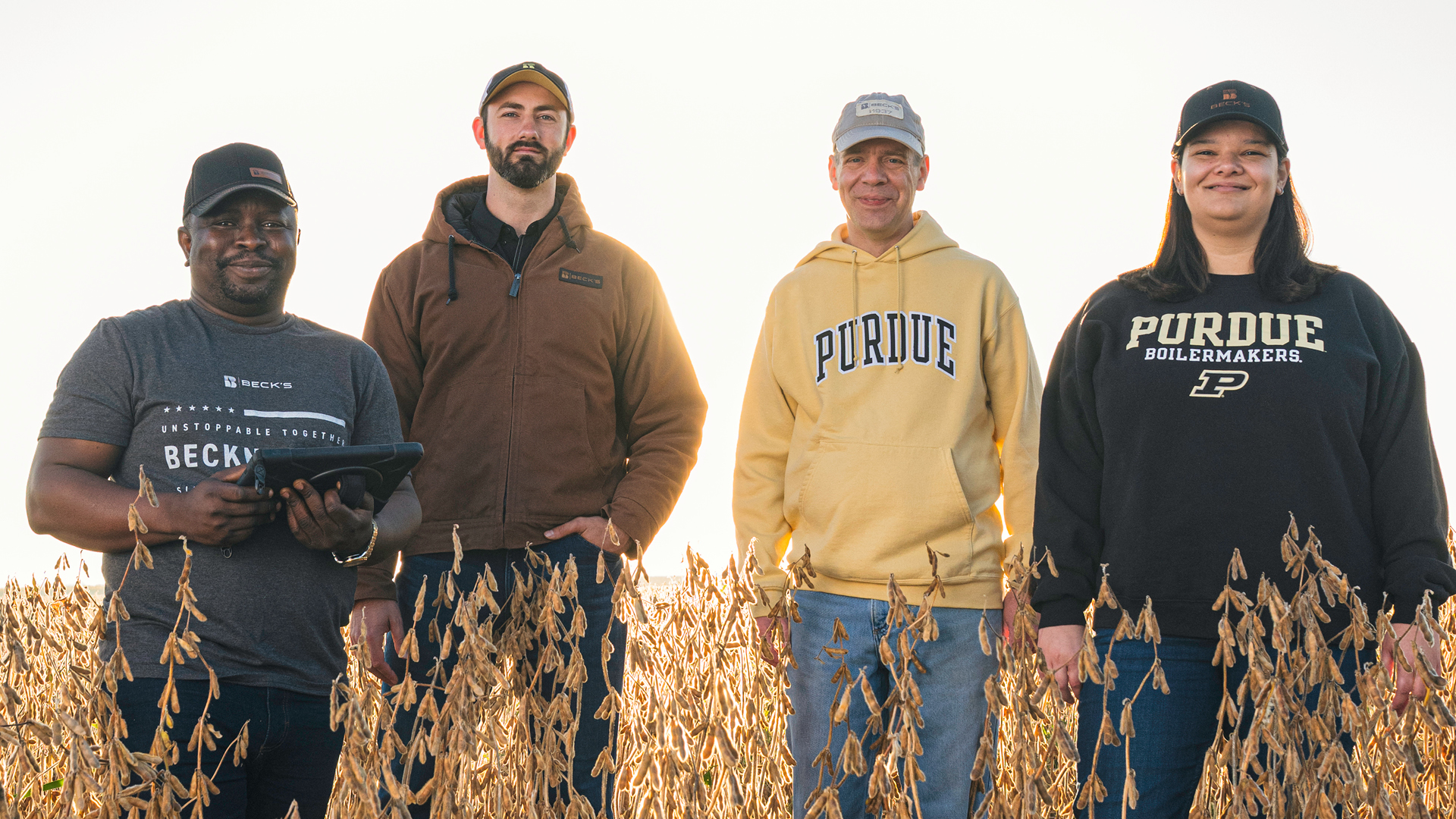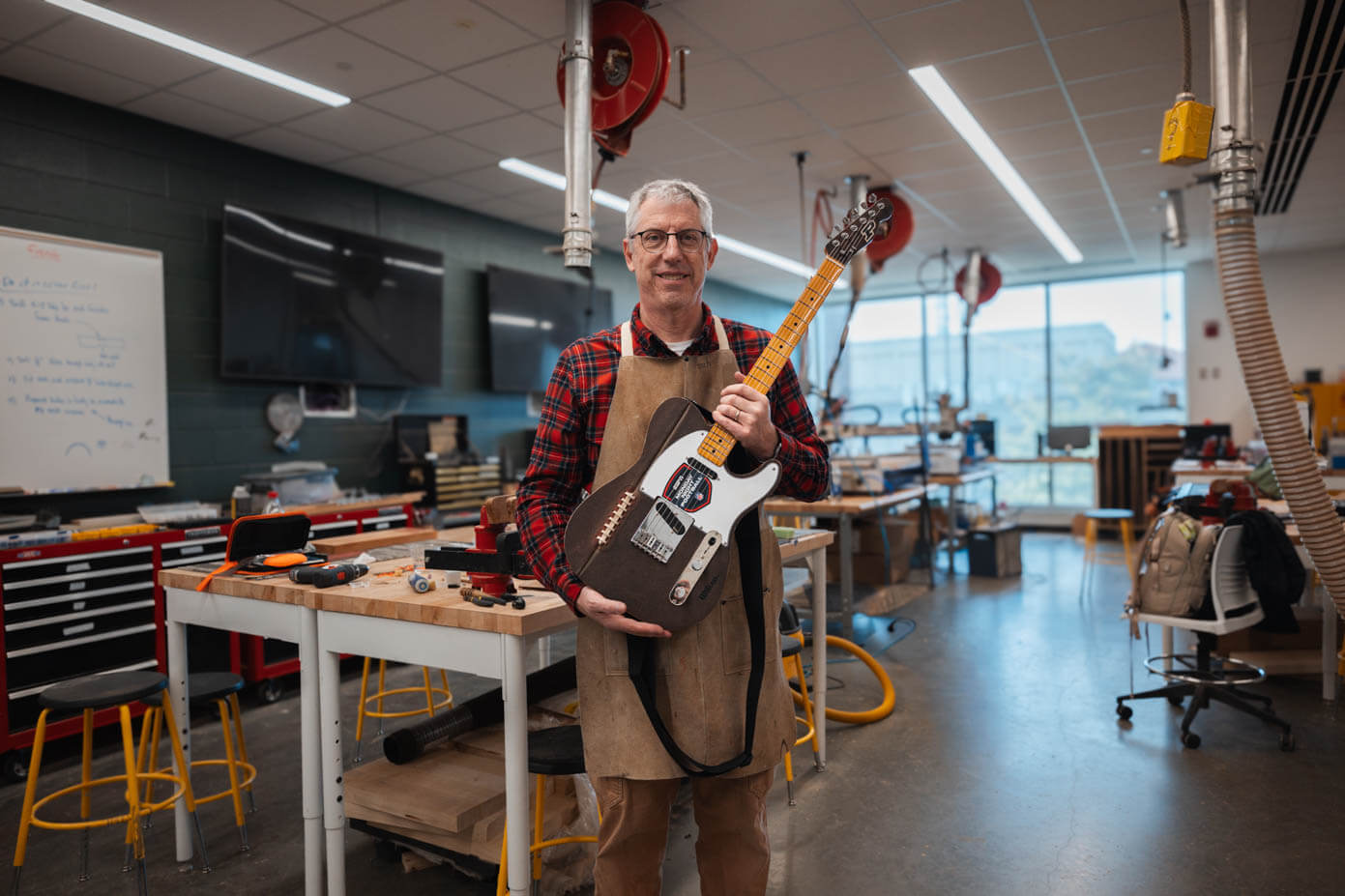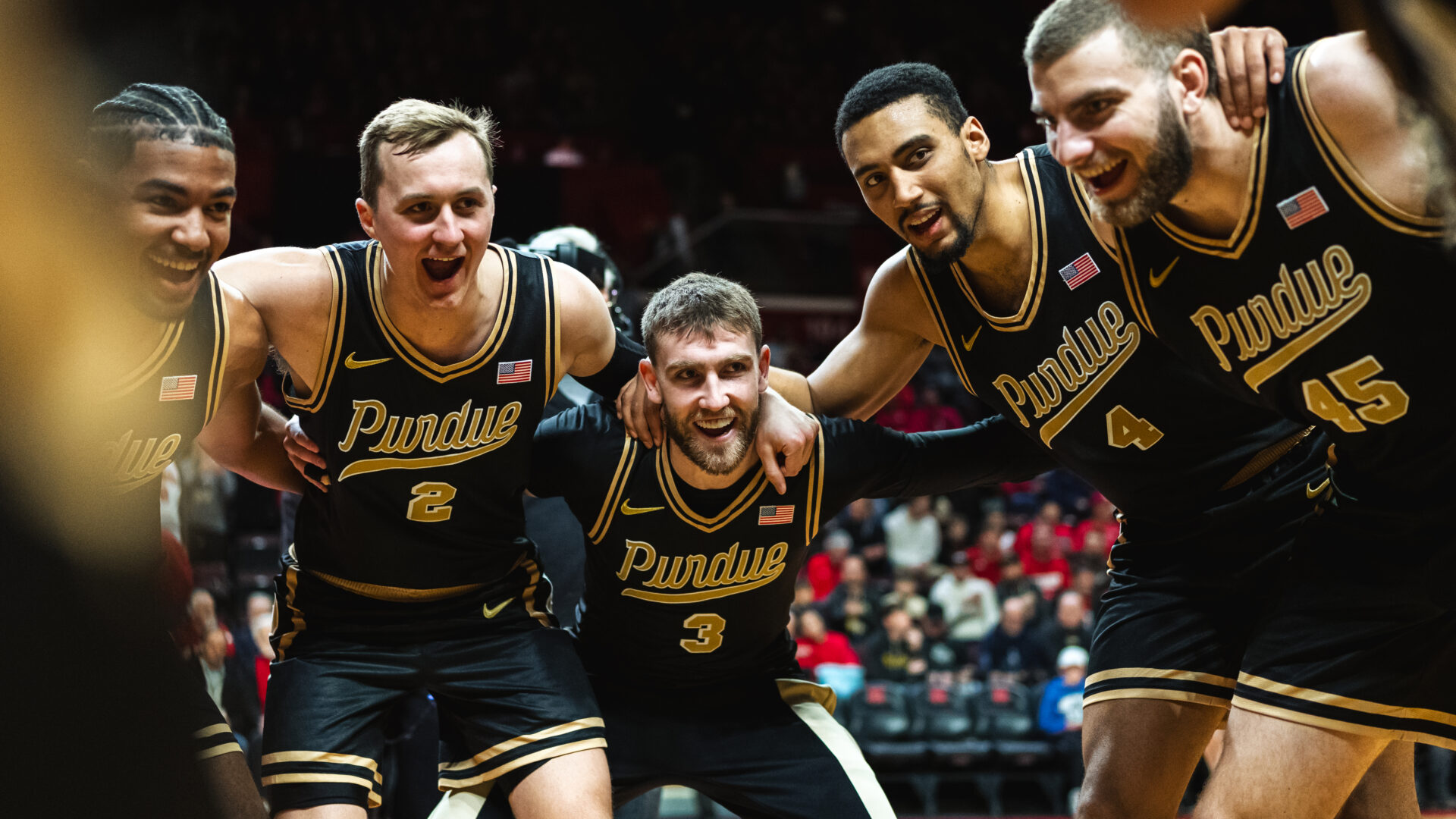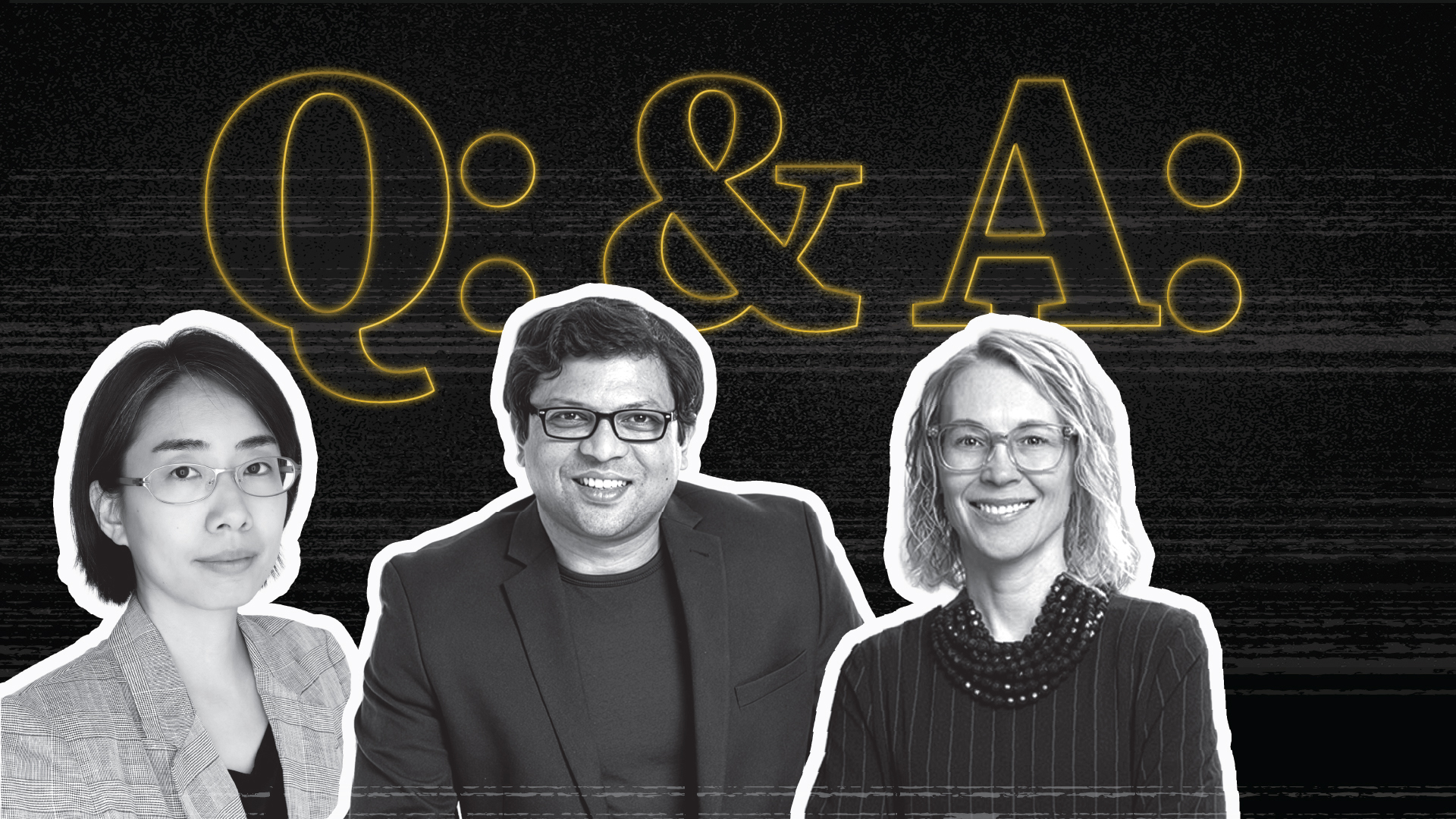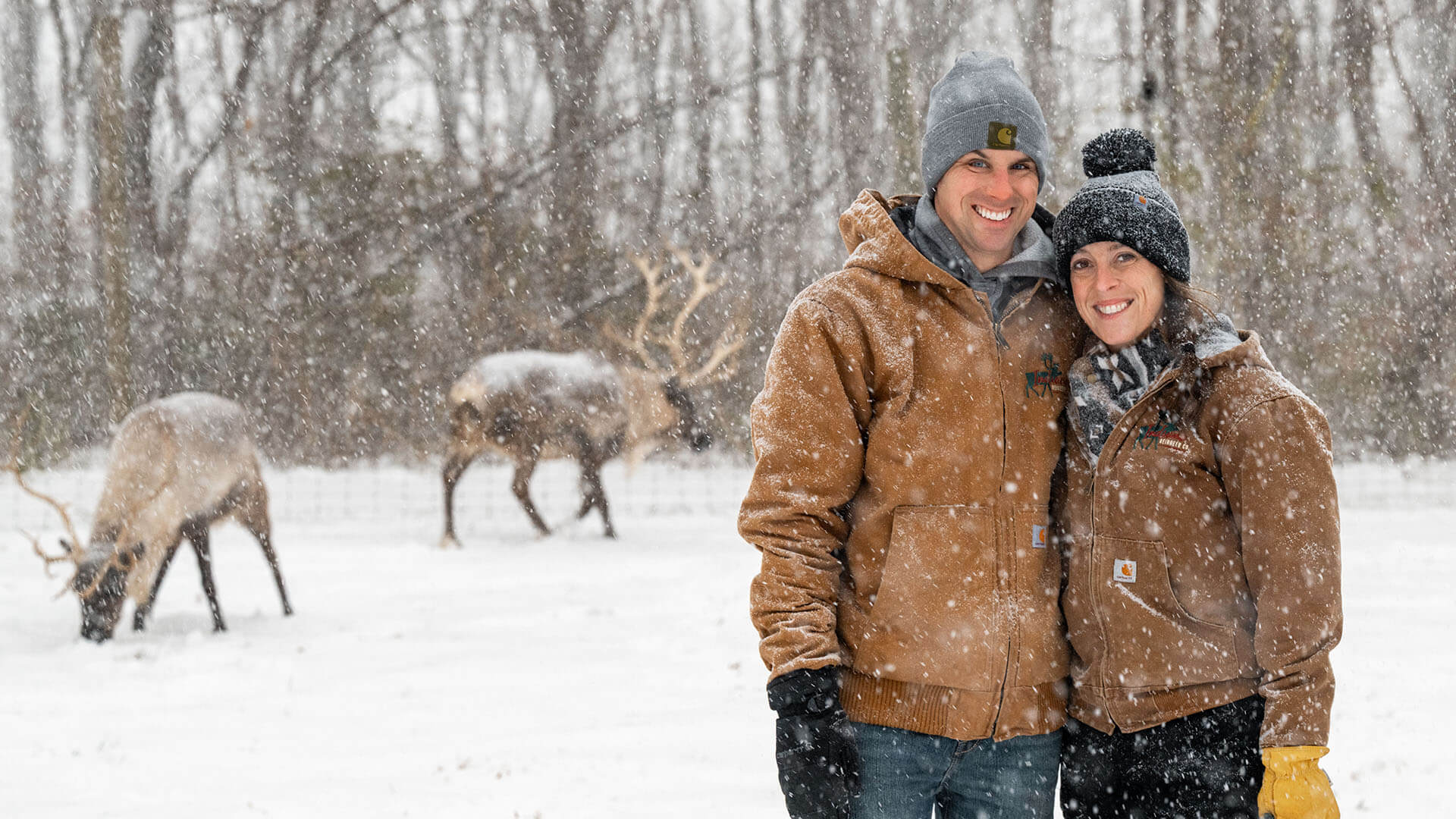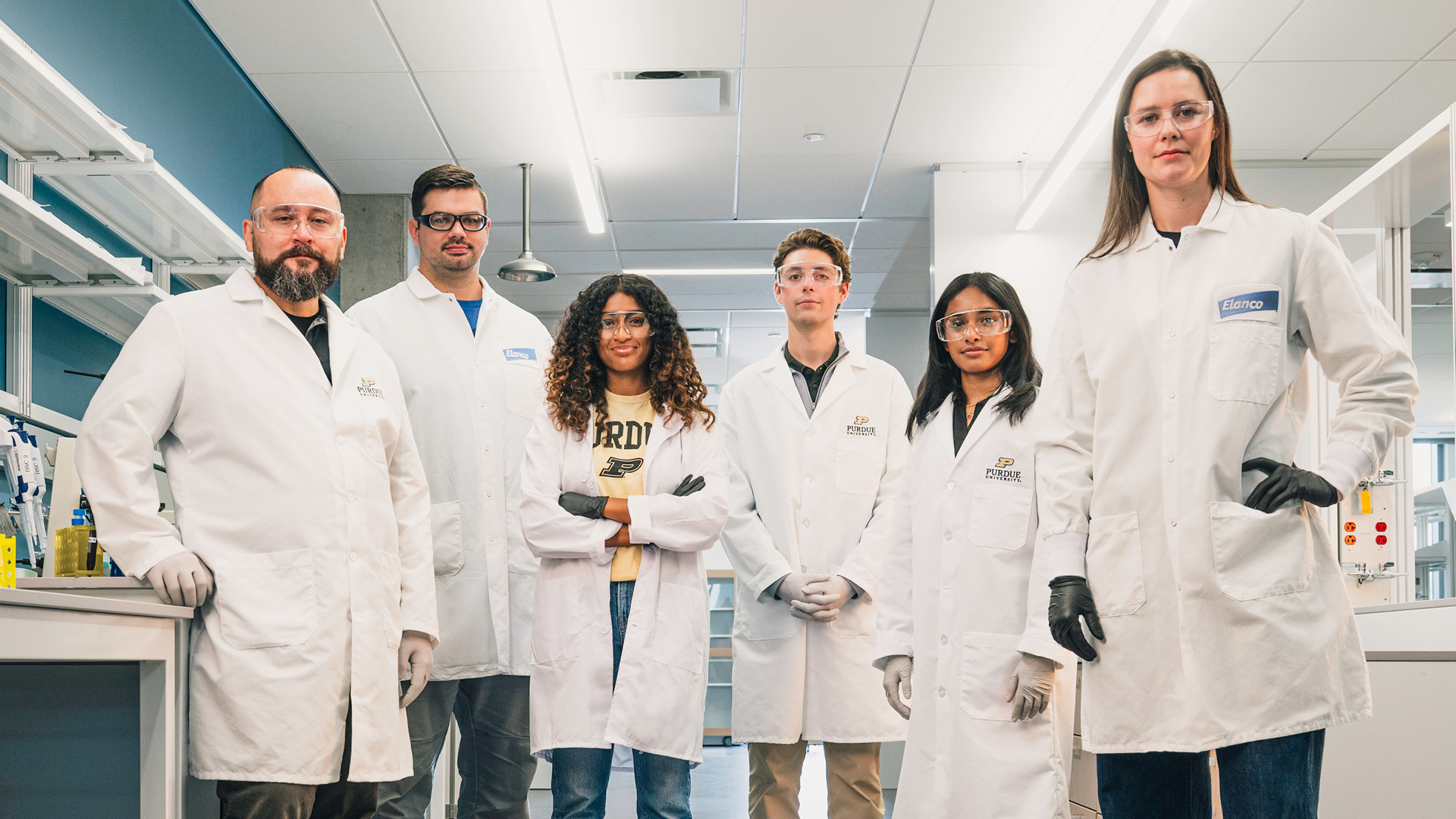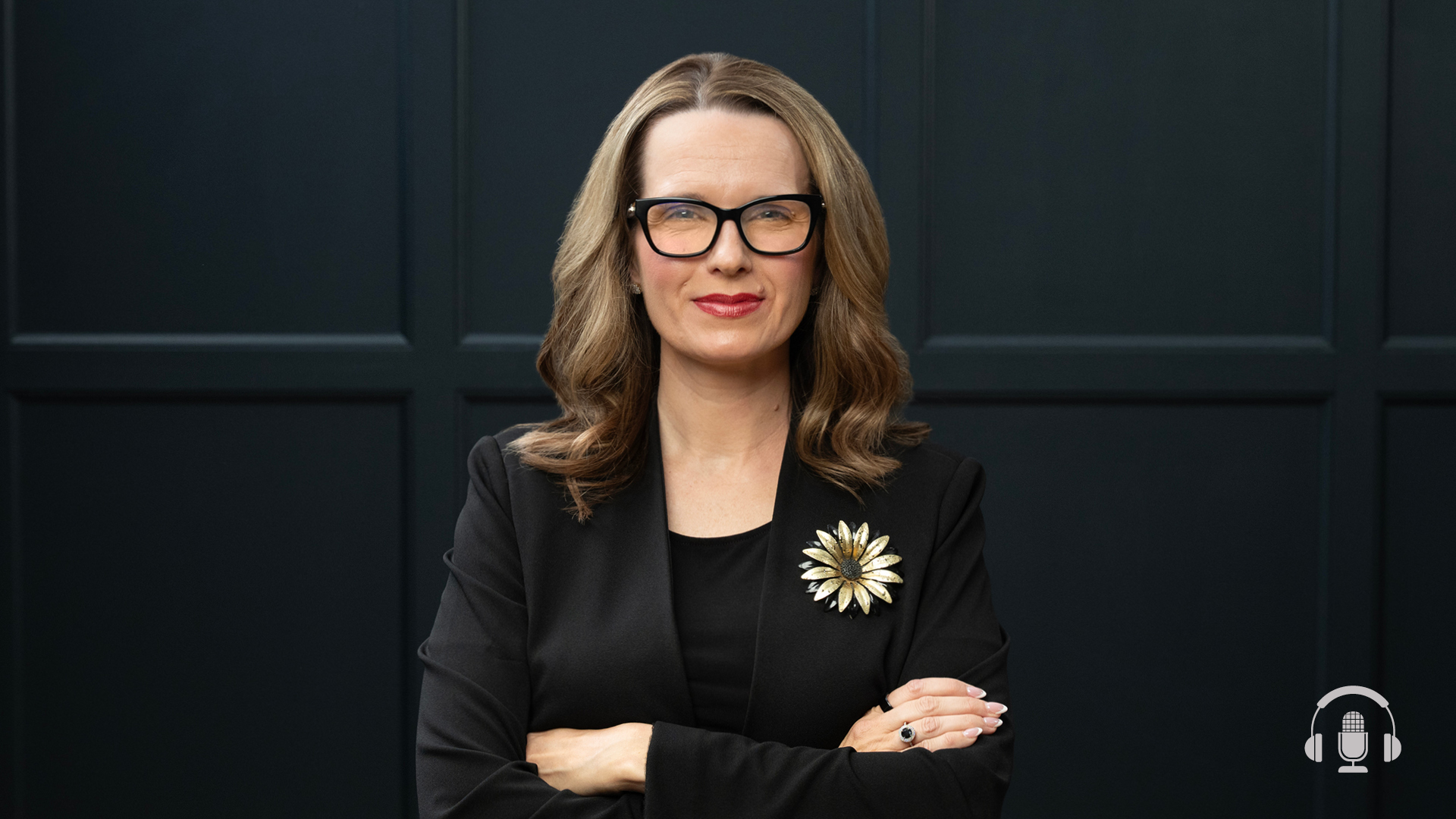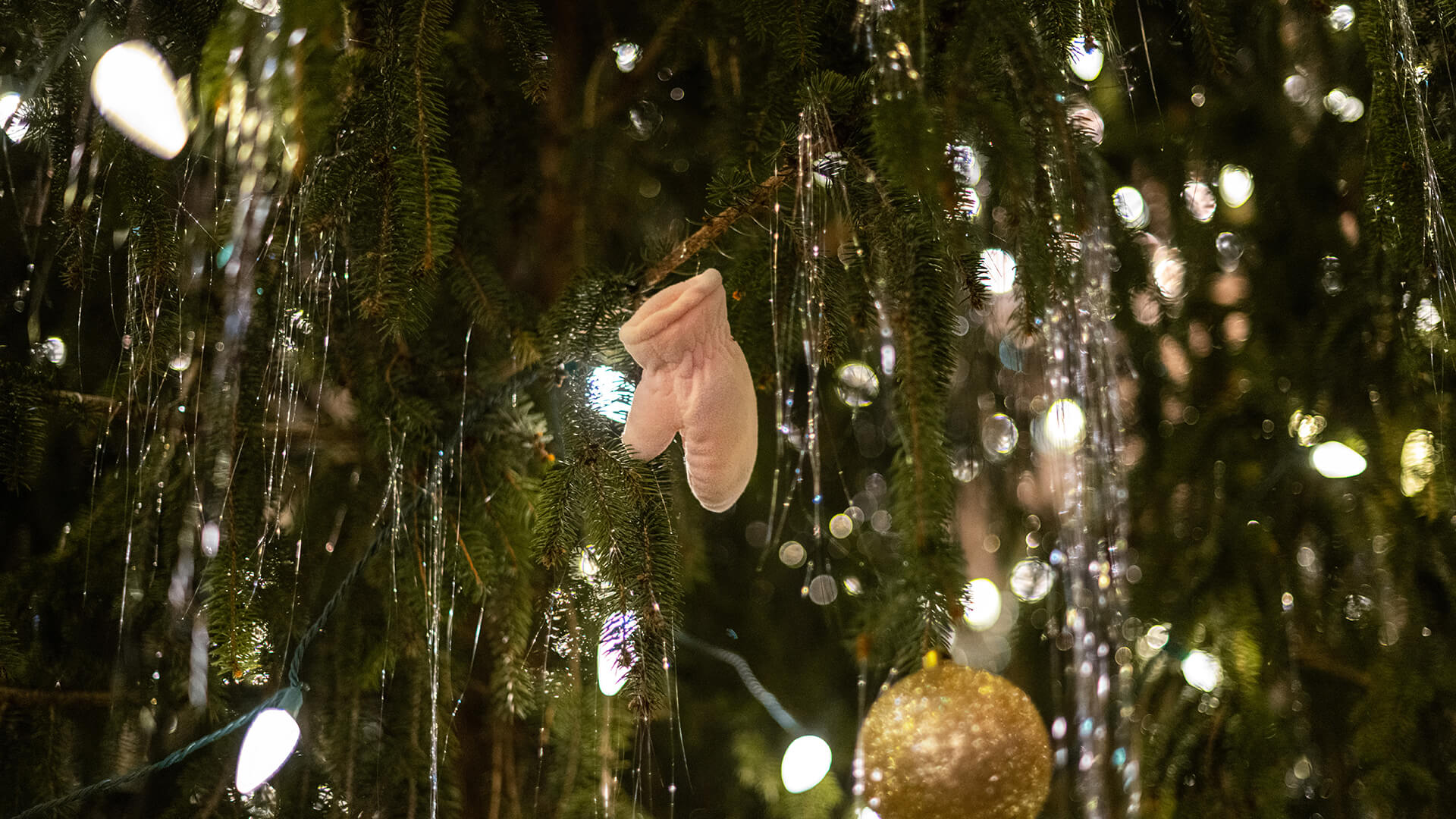Purdue alumna honored in Smithsonian IF/THEN exhibit among 120 women in STEM
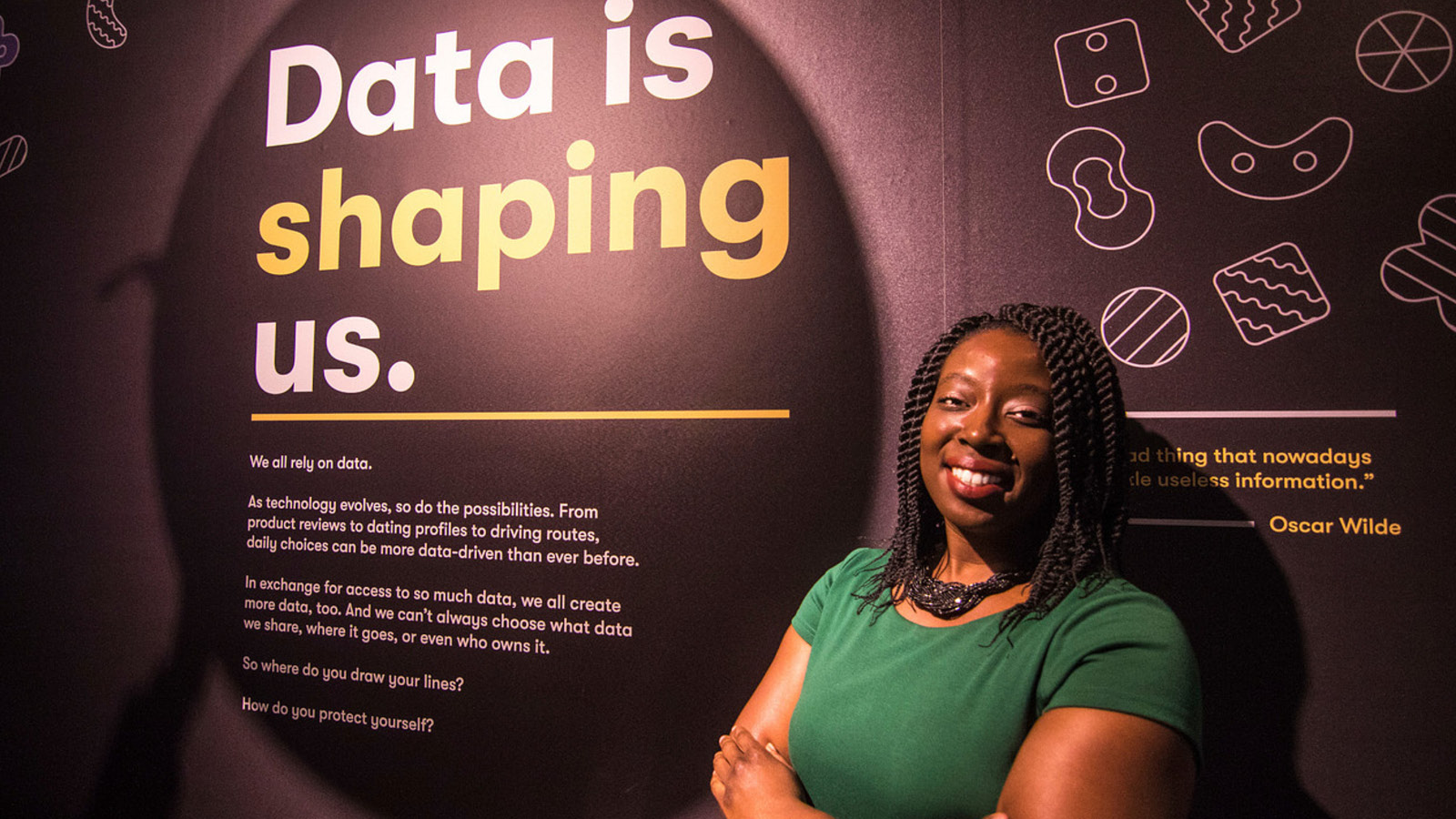
Purdue alumna Afua Bruce is one of 120 women in STEM who are featured in the IfThenSheCan statue exhibit. Photo courtesy of Lyda Hill Philanthropies' IF/THEN Initiative.
Afua Bruce serves and empowers communities by using technology to create a more equitable world
When Afua Bruce ventured into the sea of orange statues of women in STEM on display at the Smithsonian gardens and museums, a sense of awe settled over her. And then she saw a familiar face among the figures: her own.
“It was incredible,” says Bruce, a Purdue University computer engineering alumna, esteemed public interest technologist, and now author of a new book called “The Tech That Comes Next: How Changemakers, Philanthropists, and Technologists Can Build an Equitable World.” Bruce is featured as one of those 120 bright orange statues of women in STEM in the IfThenSheCan exhibit, shortened to IF/THEN.
“The goal of the IF/THEN program – and what gave it its name – is to demonstrate that if she can see it, then, she can be it,” Bruce says. “We want to give girls and women in STEM role models that they can see and talk to.”
The traveling exhibit of 3-D printed statues celebrates the monumental impact of contemporary female engineers, computer scientists, technologists, and innovators in science, technology, engineering and math. The exhibit, created by Lyda Hill Philanthropies, is on display in Smithsonian gardens and museums to celebrate the newly coined Women’s Futures Month.
“There are only a handful of statues of real women in the United States, until now,” Bruce says.
Bruce is correct. A 2016 study conducted by former U.S. Treasurer Rosie Rios uncovered an uncomfortable truth: the 10 largest cities in the United States publicly displayed an average of less than half a statue per city representing real women.
What we choose to honor on pedestals matters, and Bruce is proud to be part of a group of ambassadors who are opening up who gets included and represented on those pedestals.
“Seeing so many statues of women together is pretty powerful,” Bruce says. “I now know a lot these women. I know their stories. I know about their research and what they’ve gone through to get to where they are.”
Bruce connected with her fellow IF/THEN ambassadors after their selection in 2019. She has enjoyed continuing her passion for inspiring the next generation of children through outreach in classrooms, museums and media with IF/THEN.
Bruce says she did not find a role model who was also Black female engineer focused on public interest technology until she was in her late 30s, and she is “excited and humbled” whenever she discovers that she has served as a role model to someone else, whether through the IF/THEN exhibit outreach or otherwise.
“Walking up and touching my statue was the most surreal experience,” Bruce says. “It was such a great moment to reflect on the perseverance that was required to get here – the peaks and valleys along the way.”
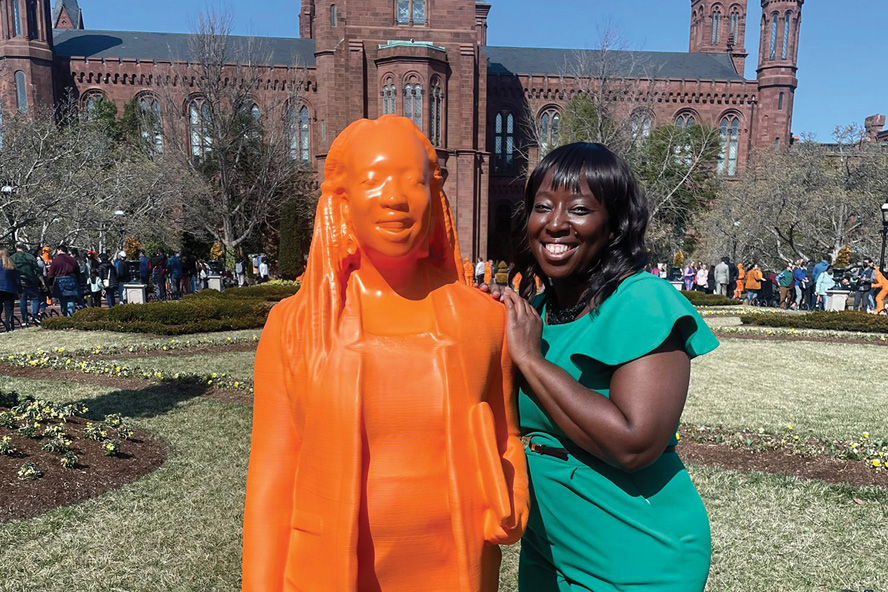
Walking up and touching my statue was the most surreal experience. It was such a great moment to reflect on the perseverance that was required to get here – the peaks and valleys along the way.
Afua Bruce BS computer engineering ’05
Persistence at Purdue and beyond
Bruce traces those peaks and valleys of her career journey back to childhood. She finds that she has always loved two things: helping people and technology. Her parents emigrated from Ghana to Fort Wayne, Indiana, where Bruce lived during high school, and instilled in their daughters a desire to serve their community.
“I am one of those people who loved math and science from an early age. Math was generally my favorite subject all through school, and I decided to major in computer engineering,” she says. During a preview weekend offered by the Minority Engineering Program, she visited Purdue and knew that she would find her fit at the University.
Bruce says, “I could not be where I am without the skills I gained at Purdue. That is for sure. My education helped me do great things in great places.”
While at Purdue, Bruce stumbled upon the opportunity to connect her growing engineering know-how to making a social impact within the greater Lafayette community through Purdue’s EPICS program. EPICS is a service-learning program where students partner with community organizations to solve problems.
“Being on the EPICS team and working with a local nonprofit in Lafayette was my first exposure to the way engineering and community service could come together,” Bruce says. “At the time, I didn’t have a framework for how I could do that work as my full-time job as opposed to volunteering on the side. It was very formative.”
That experience would come back to help Bruce years down the line. Finding one’s path takes persistence for all young Boilermakers, Bruce included.
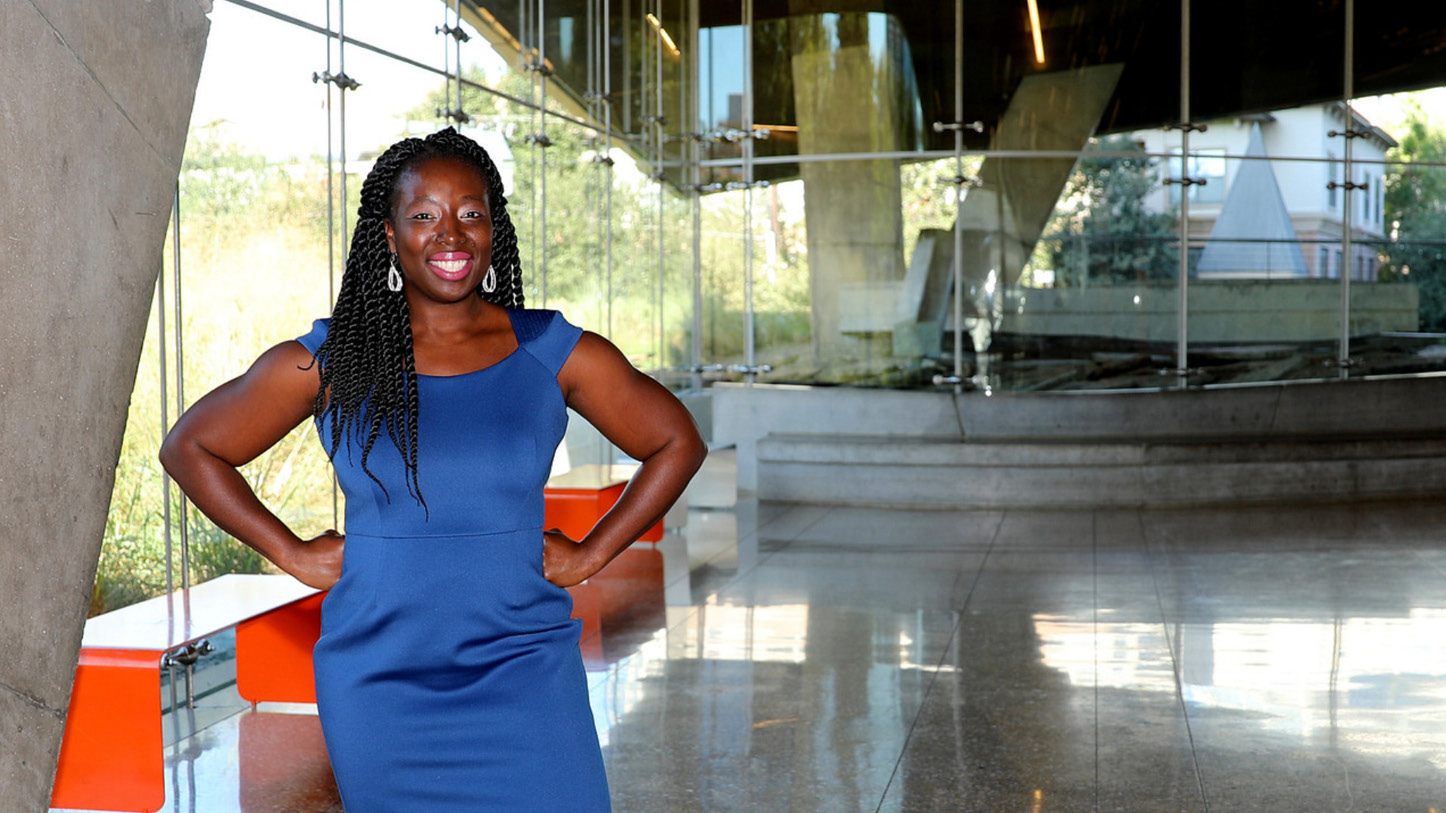
“Persistence is the story of life for so many people, and it’s the story of my life as well,” Bruce says. “Sometimes, people are confronted with challenges, and they think it means that whatever they are pursuing is not for them. Take, for example, getting through Purdue engineering. It is not easy, but it is worth persevering through.”
During her second year of classes in computer engineering, Bruce occasionally had difficulty connecting the theoretical principles she was learning to why they mattered. She sees that challenge today when she meets with students in her outreach work.
“When we lead with the engineering concept itself — the math fundamentals — people can get lost,” she says. “But when you start with some of the issues and the social impact you can have, you’ll find there are more people interested in doing the work, and you’ll find a greater diversity of people interested in doing the work.”
Bruce launched her career in computer engineering with IBM, a role she secured after her IBM co-op experience at Purdue. The co-op allowed her to start building expertise in a field that excited her.
“My IBM co-op experience was instrumental for me. I got to apply what I was learning at Purdue and see what life would be like as a computer engineer. That was one of the biggest impacts on my career. Purdue helped me get that real-world experience that helped connect what I was learning in the classroom to how it could actually be used.”
Bruce’s path and small steps
“My career path has been somewhat unique,” Bruce says. She points to a few small steps that forever changed the course of her life in ways she couldn’t have understood at the time.
“While I was at IBM, I made time for networking groups and groups doing outreach to communities,” Bruce says. “Signing up is a small step, and going to those events is a small step. Making time to do those things in addition to the responsibilities in your job description does take a bit of effort and time. But that’s where I built relationships with people who are mentors of mine to this day, some 20 years later. That’s when I learned how the private sector can enhance and help with STEM outreach into communities.”
Bruce says that another small step – “which certainly felt like a big step at the time” – was deciding to go to grad school. “I invested in myself and expanded my skill set in engineering, business and strategy, and that investment has paid off tremendously in my career,” she says.
After receiving her MBA from the University of Michigan, Bruce spent four years working for the FBI in roles as a special advisor, project manager and chief of executive staff of science and technology. She then served as executive director of the National Science and Technology Council for the White House Office of Science and Technology Policy.
Bruce returned to the FBI briefly before making a giant leap to New America, a think tank dedicated to renewing America’s promise and highest ideals.
I could not be where I am without the skills I gained at Purdue. That is for sure. My education helped me do great things in great places.
Afua Bruce
BS computer engineering ’05
Impactful work
Her love for the intersection of engineering and community service, which she discovered during her Purdue days, guided Bruce through her personal favorite project with New America.
Bruce says, “So many people who do work at the intersection of technology and justice and policy say, when they describe their career path, ‘Well, I just sort of ended up here.’”
She worked with her colleagues to launch the Public Interest Technology University Network, a partnership of 50 schools dedicated to launching training and courses in public interest technology, Bruce’s specialty and passion.
“The Public Interest Technology University Network aims to equip students and faculty to have an impact with the communities they choose and with the issues they choose while addressing equity,” Bruce says.
“Making a difference in communities is what a lot of people want to do at the end of the day. It’s what’s needed,” Bruce says. “A lot of our most challenging problems that we’re facing as a society can’t be solved in traditional ways. If they could, we already would have solved them. It requires thinking differently, analyzing data differently, and it requires people from multiple different backgrounds coming together to solve problems.”
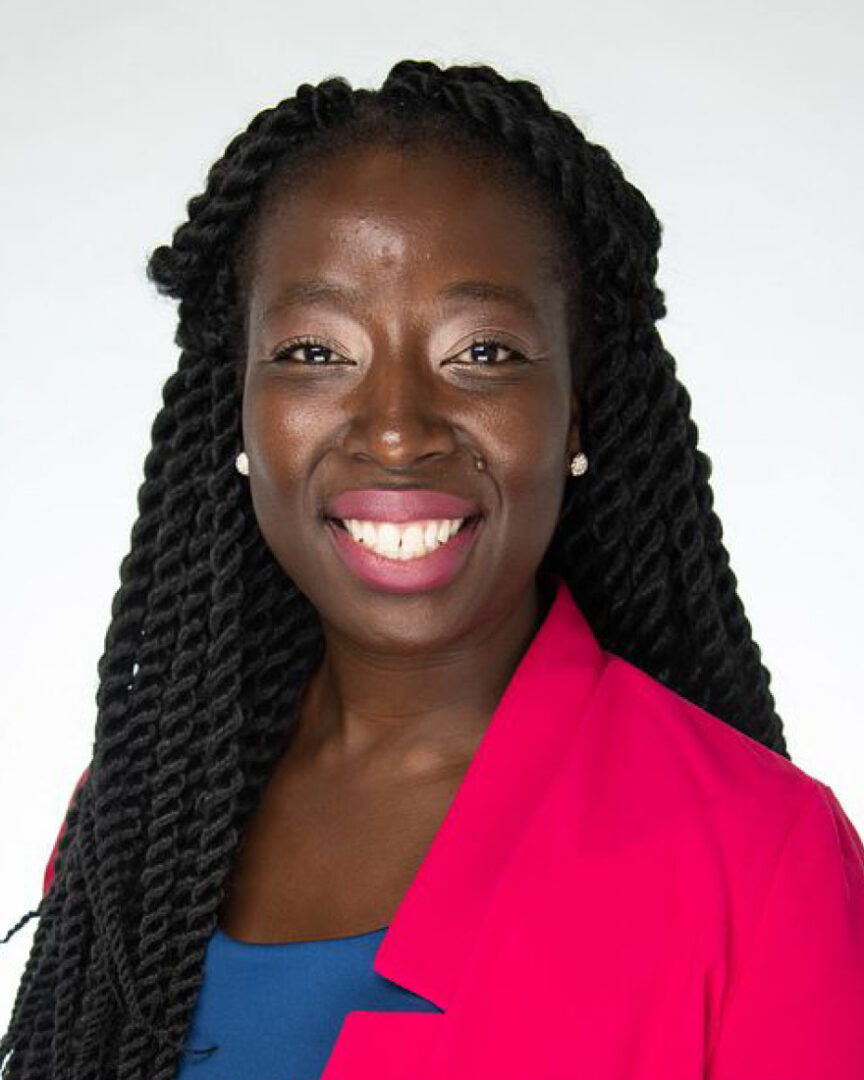
Bruce spent two years making an impact as chief program officer with DataKind, a global nonprofit that harnesses data science and AI to serve humanity. The DataKind project that resonated with her most was a partnership between DataKind and John Jay College in New York.
“Our team at DataKind helped create a program that identified students who are close to finishing school but at risk of dropping out,” Bruce says. “That allowed the John Jay College staff to make more informed choices about the right interventions to make. After two years of that program’s existence, John Jay College credits that program, the algorithm, and the interventions made by staff with an additional 900 students graduating. When you think about the impact that has on those individuals and their families, it’s pretty amazing.”
During her time at DataKind, Bruce also served on President Joe Biden’s transition team. She now works as an independent consultant in public interest technology, and she and coauthor Amy Sample Ward released their new book in March 2022.
“Our book, ‘The Tech That Comes Next: How Changemakers, Philanthropists, and Technologists Can Build an Equitable World,’ looks at how we might reimagine our relationship with technology,” she says. “Regardless of your role – social impact organization leaders, funders, corporations, technologies, community members and policymakers – we can develop and deploy technology in a way that serves people and is inclusive and equitable.”
If one thing is clear, it’s that Bruce will continue to make giant leaps as she inspires young people to pursue careers in STEM and takes on tough challenges in public interest technology that make the world a better place.
“I’m truly grateful to the friends, family and colleagues who have supported me as we figure out how to do engineering to strengthen communities, and I’m so grateful to be a part of the IF/THEN ambassador program,” Bruce says.
